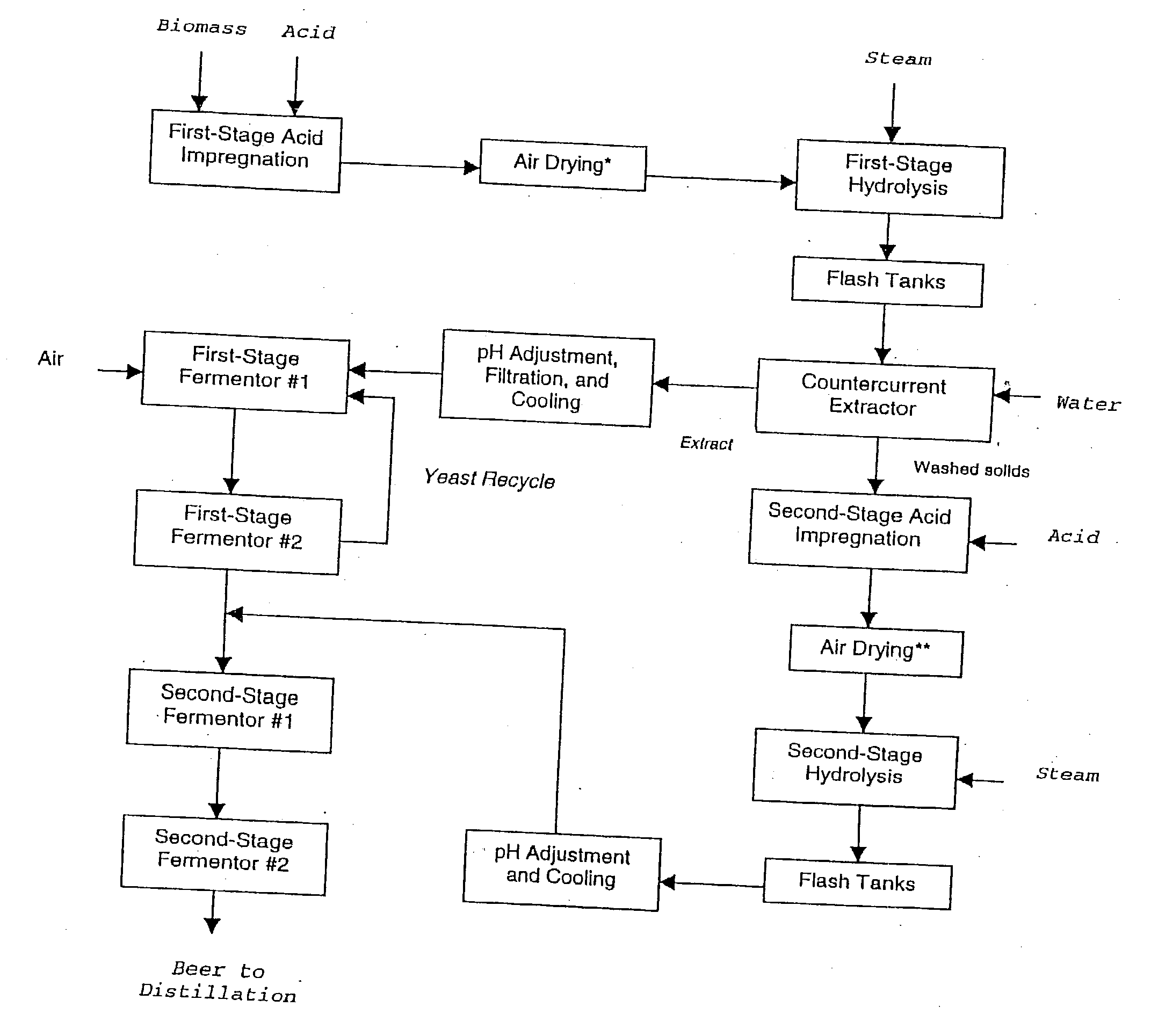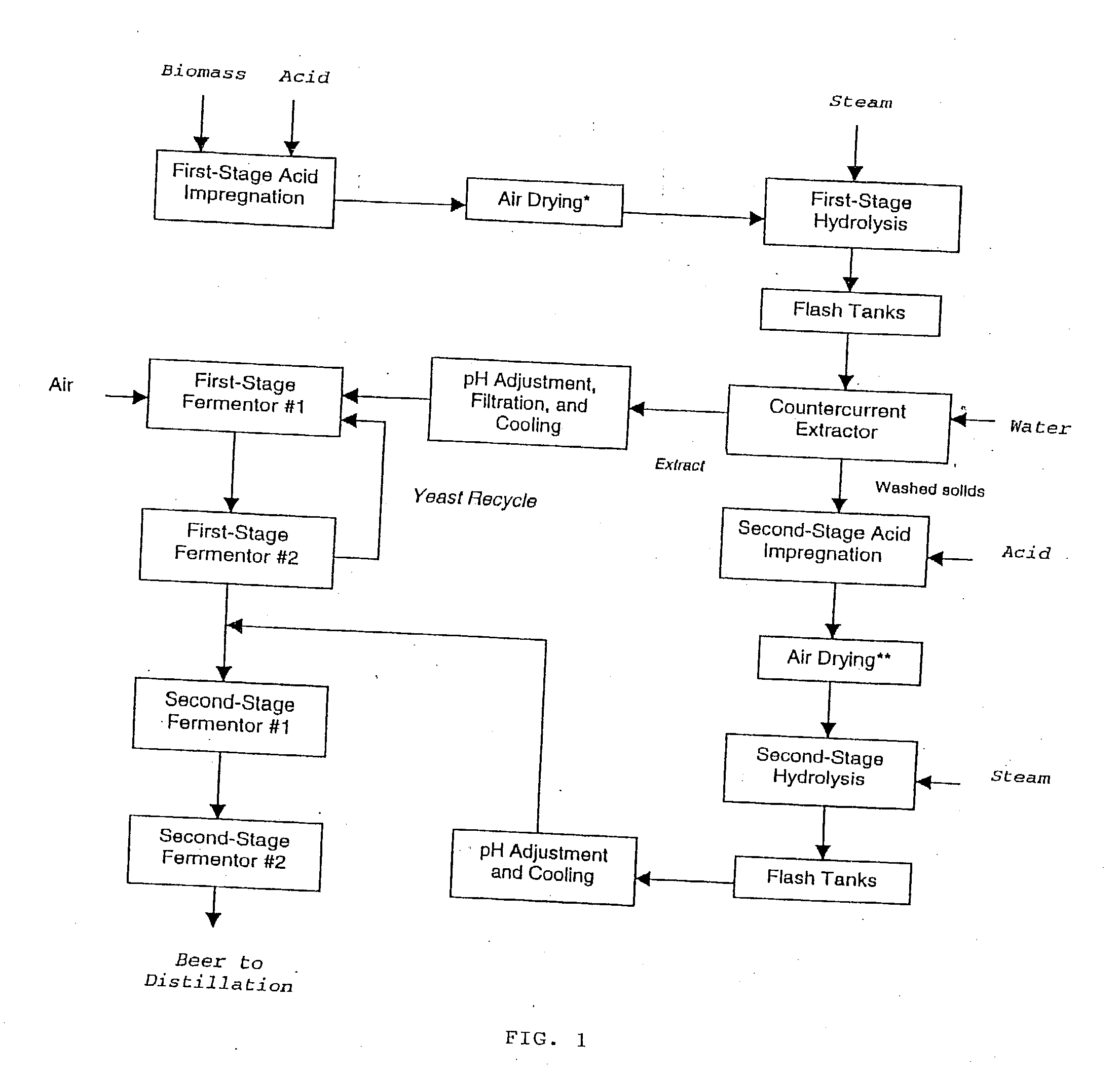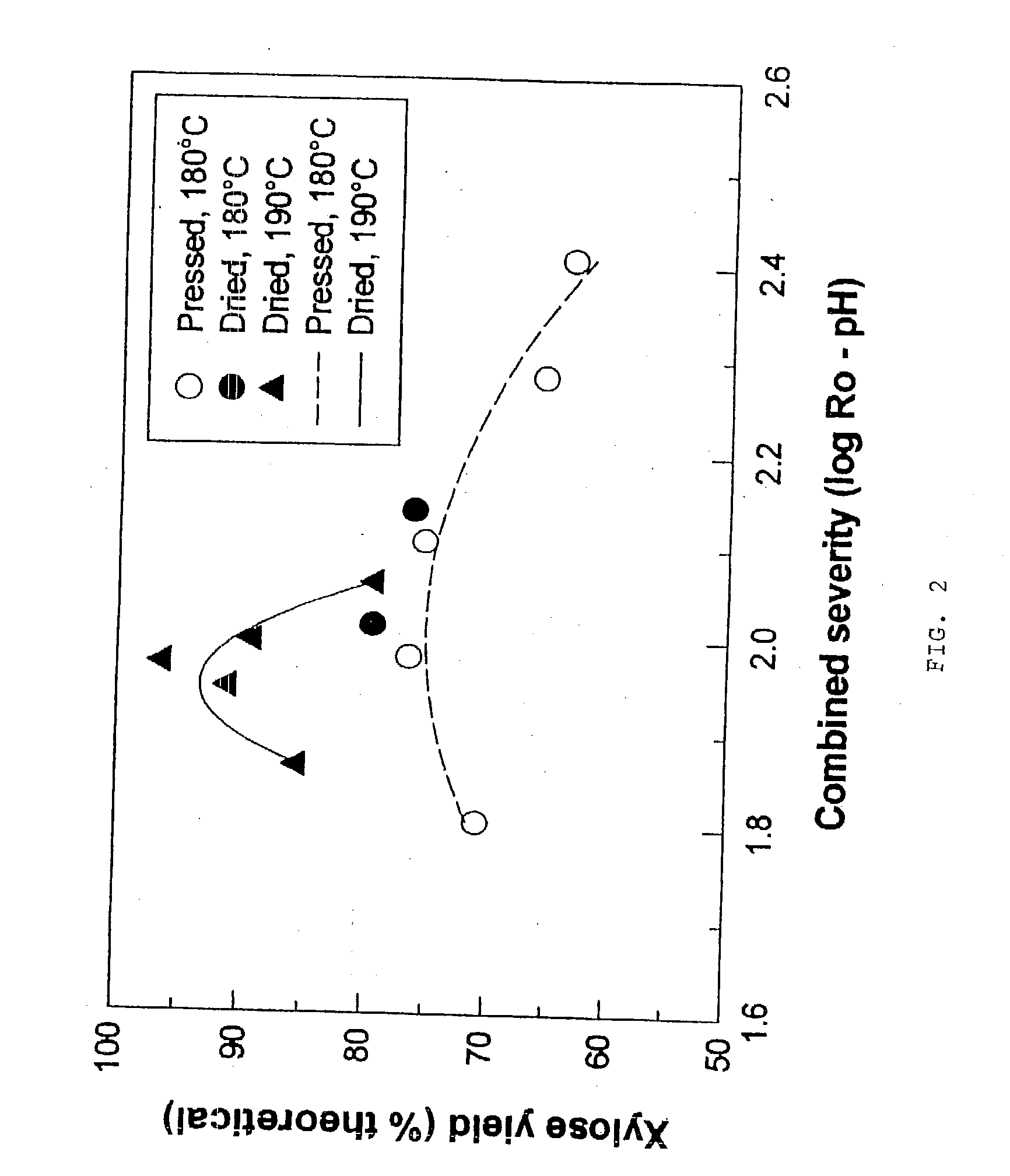Ethanol production with dilute acid hydrolysis using partially dried lignocellulosics
a technology of lignocellulosic biomass and dilute acid, which is applied in the direction of glucose production, waste based fuel, biofuels, etc., can solve the problems of high cost compared to cost, large amount of municipal waste buried or burned, and the yield of hemicellulose sugar is high, so as to achieve the effect of higher enzymatic cellulose digestibility and high yield of hemicellulose sugar
- Summary
- Abstract
- Description
- Claims
- Application Information
AI Technical Summary
Benefits of technology
Problems solved by technology
Method used
Image
Examples
Embodiment Construction
[0045] First-Stage Acid Impregnation
[0046] Moist biomass feedstock of between 35% and 50% by weight solids content is fed into an acid impregnator. The feedstock may consist of wood chips, sawdust, milled agricultural residues, or corn-refining residue. The design of the acid impregnator is dependent upon the type of acid used. If gaseous sulfur dioxide is used, no water is added. If another strong acid such as sulfuric, hydrochloric, or nitric or any strong acid which effect pH values below about 3, is used, a dilute solution of one of these acids is heated from about 40.degree. C. to about 80.degree. C. before adding to the impregnator. Optionally, a small amount of a metal salt catalyst (such as ferrous sulfate) is added in an amount sufficient to provide higher overall fermentable sugar yields than is obtainable when hydrolyzing with dilute acid alone. In order to thoroughly soak the biomass in the acid solution, a residence time of about 1 to 3 hours is required. For gaseous su...
PUM
| Property | Measurement | Unit |
|---|---|---|
| temperature | aaaaa | aaaaa |
| temperature | aaaaa | aaaaa |
| temperature | aaaaa | aaaaa |
Abstract
Description
Claims
Application Information
 Login to View More
Login to View More - R&D
- Intellectual Property
- Life Sciences
- Materials
- Tech Scout
- Unparalleled Data Quality
- Higher Quality Content
- 60% Fewer Hallucinations
Browse by: Latest US Patents, China's latest patents, Technical Efficacy Thesaurus, Application Domain, Technology Topic, Popular Technical Reports.
© 2025 PatSnap. All rights reserved.Legal|Privacy policy|Modern Slavery Act Transparency Statement|Sitemap|About US| Contact US: help@patsnap.com



